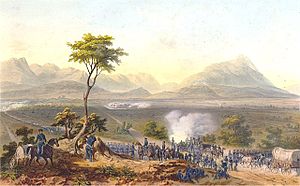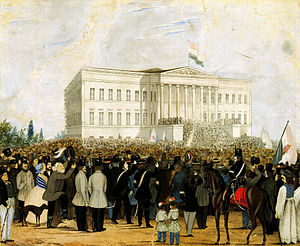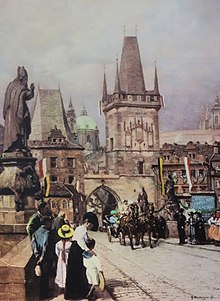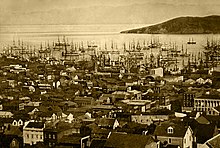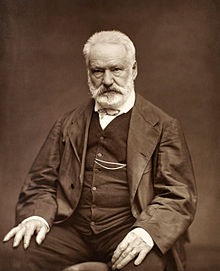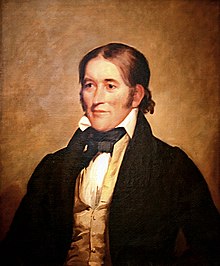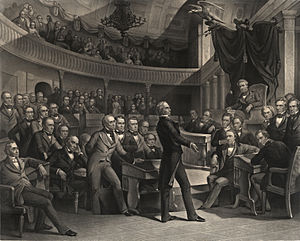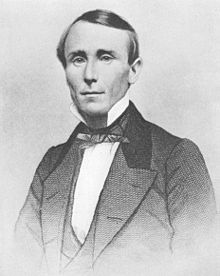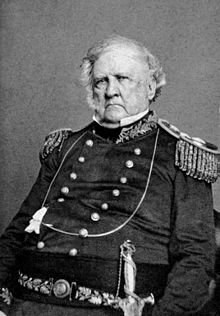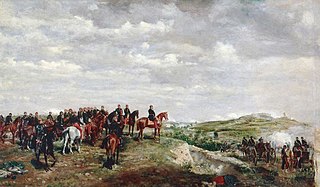Chapter 35 Liberation of Lombardy
"The Italian Army is one of the finest armed forces in all of the world. For the past seventy years we have acted as the elite legions of Rome, uniting all of our people and establishing dominance across the Mediterranean. With the success of the Tenth Crusade we have become defenders of the holy land. France and Germany may take us on, but they'll have to go through hell if they want to get anywhere near Rome."- Field Marshal Luigi Cadorna 1916
"Come my brothers! Abandon your Austrian oppressors and join us in the grand crusade to unite all of Italia."- Giuseppe Garibaldi 1846
"Day 36. The Italians refuse to abandon the siege and are constantly bombarding us with artillery fire every hour. Their ranks grow more and more everyday as all of Italy seems to fall in bed within the leauge. Half of the time the Italians we're fighting aren't even outside but within the walls, with the populace growing more agitated every day. I would pray to God but it seems the Holy Father is on Italy's side."- Captain Erich Maximoff 1846
At the start of the Lombard-Venetian War of Independence both sides were evenly matched against each other. The professional troops of the Italian league comprised of over 115,000 men with the greatest portion being from Sardinia-Piedmont who contributed over 50,000 of these armed forces. While the Italians could draw from large sources of manpower they were not the most professional or elite force within Europe, that distinction going to Prussia and Great Britain. In addition very few soldiers were veterans of the Napoleonic Wars and while they were united in the cause of a united Italy there was still many regional divisions within command and the cooperation of the troops. On the side of the Austrian army was a 100,000 men force led by Josef Radetzky. On paper the Austrians were superior with their large pool of officers, heavy amount of artillery and rifles, and large amount of veterans from the Napoleonic Wars. Had the war been going at any other time the Austrians would have succeeded but with the beginning taking place in 1846, the empire was currently under much strife with revolution. Across the army mass insubordination took place as Hungarians withdrew to their homeland, democrats refused to fire a shot against revolutionaries, and the Italian troops flocked to the rebel banners en mass with an estimated 10,000 soldiers defecting to the league in the conflict. With Austria being multi-national there were many different languages that were spoken through the enlisted ranks which made communications and orders quite difficult. For now in the beginning it was a race against time to see who could take the tactical advantage in Northern Italy first, the Italian organization of their forces, or Austria successfully suppressing its dissident forces.



King Charles Albert of Sardinia-Piedmont (Right) Giuseppe Garibaldi (Center) Josef Radetzky (Left)
The first side to take decisive action in the war was the Piedmontese with their main army under the personal command of King Charles Albert. On April 4th the Piedmontese vanguard entered into the city of Milan where they liberated the head of the revolution much to the delight of the native Italian populace. From there a main base of operations was established with Piedmontese forces rolling in the surrounding countryside to liberate it from what little Austrian resistance there was left. For the next month the Piedmontese army waited in Milan as the rest of the Kingdom mobilized in order to enlarge the army and be prepared for a possible prolonged war. The reason for this lull in advance was due to the desire to continue Italian resistance within Austrian occupied lands, with more people joining the movement as the revolutionaries in Milan under Garibaldi continued to spread their rhetoric. Further east the Papal armies and those of Tuscany, Parma, and Modena, were securing the borders and slowly moving into Lombardy in order to apply the same strategy. The main goal of the Papal army along with Sicilian reinforcements at the time was to make slow advances in order to connect a supply line with the Republic of San Marco, both forces waited for an advance in order for their respective nations to mobilize as the distances where longer in the two kingdoms. The Austrian army during all this did not sit idly by and chose to consolidate their main citadels at the Quadrilatero. West and North of Venetia, Radetzky was busy dealing with Italian movements in Tyrol and Slovenia, due to the role of the Italian populations as minorities these uprising were quickly quelled. Despite the difficulties faced by Radetzky with the ongoing unrest in Austria he was able to consolidate their positions and receive reinforcements from the Austrian side of the empire, primarily the Slavs from Bohemia and Slovakia. During the first month many skirmishes and small battles took place on the front lines with most initial victories going to the Austrian forces.

Borders of War at the end of April 1846. Italian territory in Green, Austrian in Red.
As May began each side took to the offensive in order to gain the initial momentum of the war and prevent a full invasion of their lands. The Piedmontese marched eastward with the objectives of the fortresses of Verona and Peschiera in their mind. The Austrians diverted their forces to meet the Piedmontese advance in order to retake Milan. Both sides met success and defeat as the Piedmontese won the battle of Pastrengo where they managed to overwhelm the Austrian army in a 4:1 superiority, after this the left flank of the Piedmontese army diverted there forces to Peschiera in order to siege the fort. Another army led by Charles Albert made its way further east in order to assault the fortress of Verona to consolidate the north. On May 6th the Piedmontese assaulted Verona with both sides having an army of 33,000, resulting in much failure due to the main force of the Austrian army being stationed in the fort as well as the positioning of multiple canons across the walls to deflect all Piedmontese attacks. The assaults where a disaster with 385 Piedmonts KIA, 776 WIA, and 421 POW. The Austrians overall suffered lighter casualties with 110 KIA and 292 WIA. Among the side of the Austrian defenders was Archduke Franz Joseph. After the assaults failed and the Piedmontese retreated, Radetzky lead the Austrians to charge in order to push the Italians back and win some much needed morale for the Austrian army. What resulted was the Battle of Mincio on May 8th with the Austrian army advancing en mass on the Piedmontese troops in an organized and multi-flank charge, pushing them across the Mincio river. The Piedmontese suffered more casualties with 560 KIA, 808 WIA, and 444 POW; Austria having a casualty list of 197 KIA, and 252 WIA. With Western Venetia now secured Radetzky had raised the morale of his troops considerably and continued moving west to free Peschiera from siege and capture Milan, afterwords he would turn southwards and eliminate the Papal presence outside the fortress of Mantova to cut off access to San Marco. For the next twenty days each side played a game of cat and mouse until the Battle of Curatone on May 28th where the Piedmontese were once again pushed backwards after another Austrian defeat. Radetzky cornered Charles Albert and his forces around the city of Goito on May 30th. Here the Austrians advanced but were unable to overcome the Piedmontese as they had set up defensive positions at this location within the last month and had a superior artillery advantage. Near the evening the Austrians had managed to break through the left flank when Italian reinforcements had come from the South led by General Julius Veneziano of the Papal States in coordination with additional brigades from the Sicilies. With the arrival of reinforcements the Italians were able to fill the gaps in its defenses and push the Austrians back behind their starting lines. Radetzky chose to retreat the next day when word came that both the forts of Verona and Mantova had surrendered to the Italian forces. The Battle of Goito was the first major victory for Italians of the war as while they had taken heavier casualties with 634 KIA along with 506 WIA compared to Austria's 268 KIA, 324 WIA and 135 POW; they had managed to strategically push the Austrians out of Lombardy permanently and regain the offensive momentum.


Battle of Goito (Right). Borders of War at the end of May 1846
For all of June the allied Italian armies continued to overrun much of Venetia with the aid of tens of thousands of volunteer revolutionaries who joined their ranks. The Italians gained another substantial victory at the Battle of Cuzstoza on June 9th where they had broken up an Austrian gathering to counterattack into Lombardy and had inflicted enormous casualties with over 2,000 Austrian casualties compared to the Italians 754. Towards the end of the month the Austrians were pushed back across the Adige river with the forts of Verona and Legnago being actively siege while the Romans and sicilians were pushing actively into Venice with the Ventian revolutionaries encouraging cities across the Kingdom to rise up in revolt and head west in order to link up with the Western Italian armies, resulting in the remaining half of the Quadrilatero being encircled with over 50,000 Austrians cut off from greater forces. At sea meanwhile a great armada of the Italian league had formed with over 100 ships being directed by Sicilian Admiral Romano Girardelli. The Italian fleet had been assembled over the past two months within Naples and made their way towards the Adriatic where they would make an effective blockade with the Austrians. This would have a huge longterm strategic impact on the war as the Unification of Germany under Prussia three months later would essentially cut off Austria from most of the outside world. With the uprisings in Venice many of the Austrian navy defected to the Italian cause while the remainder was essentially destroyed in the Battle of Istria where a 50 ship strong fleet of the Italians basically crushed all but 3 of the remaining 22 Austrian forces in port. Unintentionally the blockade of Austria would also help the Austrian cause as Croatia swore their loyalties to Vienna, causing their ports to be actively blockaded.



Battle of Castoza (Right) Battle of Istria (Center) Borders of War at the end of June 1846 (Left)
July became the greatest success for the Italians in the early stages of the war as Radetzky retreated with the remaining 35,000 forces of the Austrian army under his command after suffering a string of defeats in Lombardy, facing multiple assaults from the Ventian civilian population daily, and under active blockade from the Italian navies. After hearing word of the retreat of their main commander the forts of Verona and Legnano surrendered on July 7th and 9th respectively. The rest of the month was dedicated to liberating the remainder of the Kingdom of Venice and finally linking up with the young republic of San Marco. All of Venetia would be consolidated and the Italians would gain more volunteers flock to their armies in numerous numbers. With their main goals achieved a peace offer was sent to Emperor Ferdinand on July 21st with the offer of a cease fire until a decisive treaty would be signed where Austria would relinquish control of its Italian territories to the league, the reason no decisive terms were offered yet being due to the disagreement on which nation the countries would go to. Unfortunately Ferdinand would refuse to back down as until then the Frankfurt Parliament was still ongoing and Hungary had not yet rebelled. Wanting to gain more glory and power for Sardinia-Piedmont, Charles Albert had ordered the Piedmontese to advance into Austria proper in order to gain control of the remaining Italian territories for the purpose of total unification. This was done against the advice of Garibaldi and Pope Pius as they both wished to consolidate control of their main objectives and wait until the Austrians would enter negotiations. Charles Albert turned them off and continued onwards with his Piedmontese Army with small reinforcements from the other member states of the coalition who had stayed behind to fortify the region. The advance into Austria commenced on August 1st, and unlike the previous engagements, was a failure for the Italian army. The reason for this being was due to Radetzky consolidating his forces within the last month and finally receiving total support from Austria after the main revolutions in Vienna had died down. In addition Sardinia was taking on the role of a foreign invader as they were advancing unto lands with German or Slavic majorities, earning little cooperation from the local populations. Three decisive battles were fought with the Battles of Tyrol, Istria and Ljublana from August 6th-10th. All of which resulted in Austrian victories with the Piedmontese forces being overrun and pushed backwards due to poor knowledge of the terrain as well as poor coordination against the well organized Austrian defense. The Piedmontese took over 8,000 casualties out of their 60,000 soldiers in this campaign while the Austrians only took 5,000 out of 55,000. The Piedmontese were pursued back all the way to Venetian lines with the Austrians in pursuit hoping for a counterattack which would give them an entrance back into the peninsula. While at first they were successful the Austrians had met fierece resistance from the rest of the league's armies in the Battle of Udine on August 17th where the Italians under the command of Garibaldi held a united line against the Austrian attack force, standing off multiple assaults and barraging the Austrians with large amounts of artillery. The Austrians thereafter were driven back across the province of Udine to the border with Austria on August 24th where both sides would be in a state of stalemate for the next month. The campaign into Austria was a huge strategic blunder for King Charles Albert as it added to his string of defeats against the Austrians and made him seem like a weak general. On the other hand Pope Pius used the Papal occupation of Venice to venture out to the front lines and liberated territory in order to greet with the revolutionaries and congratulate them on their victories agaisnt the Austrian oppressors. With the Catholic Church actively giving out aid to refugees and praising the holiness of Pius's cause, it strengthened Pius's position as head of Italian unification and made him a hero of all of Italy. The remainder of the war would remain static until October 1846 where the Italians would once again go on the offensive in order to decisively defeat Austria in response to German Unification as well as Hungary's revolt for independence.



Complete Italian control of Lombardy-Venetia in August 1846 (Right) Pope Pius meeting with revolutionaries and Italian General (Center) Austrian Cavalry at Battle of Ljulbana (Left)
"The Italian Army is one of the finest armed forces in all of the world. For the past seventy years we have acted as the elite legions of Rome, uniting all of our people and establishing dominance across the Mediterranean. With the success of the Tenth Crusade we have become defenders of the holy land. France and Germany may take us on, but they'll have to go through hell if they want to get anywhere near Rome."- Field Marshal Luigi Cadorna 1916
"Come my brothers! Abandon your Austrian oppressors and join us in the grand crusade to unite all of Italia."- Giuseppe Garibaldi 1846
"Day 36. The Italians refuse to abandon the siege and are constantly bombarding us with artillery fire every hour. Their ranks grow more and more everyday as all of Italy seems to fall in bed within the leauge. Half of the time the Italians we're fighting aren't even outside but within the walls, with the populace growing more agitated every day. I would pray to God but it seems the Holy Father is on Italy's side."- Captain Erich Maximoff 1846
At the start of the Lombard-Venetian War of Independence both sides were evenly matched against each other. The professional troops of the Italian league comprised of over 115,000 men with the greatest portion being from Sardinia-Piedmont who contributed over 50,000 of these armed forces. While the Italians could draw from large sources of manpower they were not the most professional or elite force within Europe, that distinction going to Prussia and Great Britain. In addition very few soldiers were veterans of the Napoleonic Wars and while they were united in the cause of a united Italy there was still many regional divisions within command and the cooperation of the troops. On the side of the Austrian army was a 100,000 men force led by Josef Radetzky. On paper the Austrians were superior with their large pool of officers, heavy amount of artillery and rifles, and large amount of veterans from the Napoleonic Wars. Had the war been going at any other time the Austrians would have succeeded but with the beginning taking place in 1846, the empire was currently under much strife with revolution. Across the army mass insubordination took place as Hungarians withdrew to their homeland, democrats refused to fire a shot against revolutionaries, and the Italian troops flocked to the rebel banners en mass with an estimated 10,000 soldiers defecting to the league in the conflict. With Austria being multi-national there were many different languages that were spoken through the enlisted ranks which made communications and orders quite difficult. For now in the beginning it was a race against time to see who could take the tactical advantage in Northern Italy first, the Italian organization of their forces, or Austria successfully suppressing its dissident forces.



King Charles Albert of Sardinia-Piedmont (Right) Giuseppe Garibaldi (Center) Josef Radetzky (Left)
The first side to take decisive action in the war was the Piedmontese with their main army under the personal command of King Charles Albert. On April 4th the Piedmontese vanguard entered into the city of Milan where they liberated the head of the revolution much to the delight of the native Italian populace. From there a main base of operations was established with Piedmontese forces rolling in the surrounding countryside to liberate it from what little Austrian resistance there was left. For the next month the Piedmontese army waited in Milan as the rest of the Kingdom mobilized in order to enlarge the army and be prepared for a possible prolonged war. The reason for this lull in advance was due to the desire to continue Italian resistance within Austrian occupied lands, with more people joining the movement as the revolutionaries in Milan under Garibaldi continued to spread their rhetoric. Further east the Papal armies and those of Tuscany, Parma, and Modena, were securing the borders and slowly moving into Lombardy in order to apply the same strategy. The main goal of the Papal army along with Sicilian reinforcements at the time was to make slow advances in order to connect a supply line with the Republic of San Marco, both forces waited for an advance in order for their respective nations to mobilize as the distances where longer in the two kingdoms. The Austrian army during all this did not sit idly by and chose to consolidate their main citadels at the Quadrilatero. West and North of Venetia, Radetzky was busy dealing with Italian movements in Tyrol and Slovenia, due to the role of the Italian populations as minorities these uprising were quickly quelled. Despite the difficulties faced by Radetzky with the ongoing unrest in Austria he was able to consolidate their positions and receive reinforcements from the Austrian side of the empire, primarily the Slavs from Bohemia and Slovakia. During the first month many skirmishes and small battles took place on the front lines with most initial victories going to the Austrian forces.
Borders of War at the end of April 1846. Italian territory in Green, Austrian in Red.
As May began each side took to the offensive in order to gain the initial momentum of the war and prevent a full invasion of their lands. The Piedmontese marched eastward with the objectives of the fortresses of Verona and Peschiera in their mind. The Austrians diverted their forces to meet the Piedmontese advance in order to retake Milan. Both sides met success and defeat as the Piedmontese won the battle of Pastrengo where they managed to overwhelm the Austrian army in a 4:1 superiority, after this the left flank of the Piedmontese army diverted there forces to Peschiera in order to siege the fort. Another army led by Charles Albert made its way further east in order to assault the fortress of Verona to consolidate the north. On May 6th the Piedmontese assaulted Verona with both sides having an army of 33,000, resulting in much failure due to the main force of the Austrian army being stationed in the fort as well as the positioning of multiple canons across the walls to deflect all Piedmontese attacks. The assaults where a disaster with 385 Piedmonts KIA, 776 WIA, and 421 POW. The Austrians overall suffered lighter casualties with 110 KIA and 292 WIA. Among the side of the Austrian defenders was Archduke Franz Joseph. After the assaults failed and the Piedmontese retreated, Radetzky lead the Austrians to charge in order to push the Italians back and win some much needed morale for the Austrian army. What resulted was the Battle of Mincio on May 8th with the Austrian army advancing en mass on the Piedmontese troops in an organized and multi-flank charge, pushing them across the Mincio river. The Piedmontese suffered more casualties with 560 KIA, 808 WIA, and 444 POW; Austria having a casualty list of 197 KIA, and 252 WIA. With Western Venetia now secured Radetzky had raised the morale of his troops considerably and continued moving west to free Peschiera from siege and capture Milan, afterwords he would turn southwards and eliminate the Papal presence outside the fortress of Mantova to cut off access to San Marco. For the next twenty days each side played a game of cat and mouse until the Battle of Curatone on May 28th where the Piedmontese were once again pushed backwards after another Austrian defeat. Radetzky cornered Charles Albert and his forces around the city of Goito on May 30th. Here the Austrians advanced but were unable to overcome the Piedmontese as they had set up defensive positions at this location within the last month and had a superior artillery advantage. Near the evening the Austrians had managed to break through the left flank when Italian reinforcements had come from the South led by General Julius Veneziano of the Papal States in coordination with additional brigades from the Sicilies. With the arrival of reinforcements the Italians were able to fill the gaps in its defenses and push the Austrians back behind their starting lines. Radetzky chose to retreat the next day when word came that both the forts of Verona and Mantova had surrendered to the Italian forces. The Battle of Goito was the first major victory for Italians of the war as while they had taken heavier casualties with 634 KIA along with 506 WIA compared to Austria's 268 KIA, 324 WIA and 135 POW; they had managed to strategically push the Austrians out of Lombardy permanently and regain the offensive momentum.

Battle of Goito (Right). Borders of War at the end of May 1846
For all of June the allied Italian armies continued to overrun much of Venetia with the aid of tens of thousands of volunteer revolutionaries who joined their ranks. The Italians gained another substantial victory at the Battle of Cuzstoza on June 9th where they had broken up an Austrian gathering to counterattack into Lombardy and had inflicted enormous casualties with over 2,000 Austrian casualties compared to the Italians 754. Towards the end of the month the Austrians were pushed back across the Adige river with the forts of Verona and Legnago being actively siege while the Romans and sicilians were pushing actively into Venice with the Ventian revolutionaries encouraging cities across the Kingdom to rise up in revolt and head west in order to link up with the Western Italian armies, resulting in the remaining half of the Quadrilatero being encircled with over 50,000 Austrians cut off from greater forces. At sea meanwhile a great armada of the Italian league had formed with over 100 ships being directed by Sicilian Admiral Romano Girardelli. The Italian fleet had been assembled over the past two months within Naples and made their way towards the Adriatic where they would make an effective blockade with the Austrians. This would have a huge longterm strategic impact on the war as the Unification of Germany under Prussia three months later would essentially cut off Austria from most of the outside world. With the uprisings in Venice many of the Austrian navy defected to the Italian cause while the remainder was essentially destroyed in the Battle of Istria where a 50 ship strong fleet of the Italians basically crushed all but 3 of the remaining 22 Austrian forces in port. Unintentionally the blockade of Austria would also help the Austrian cause as Croatia swore their loyalties to Vienna, causing their ports to be actively blockaded.


Battle of Castoza (Right) Battle of Istria (Center) Borders of War at the end of June 1846 (Left)
July became the greatest success for the Italians in the early stages of the war as Radetzky retreated with the remaining 35,000 forces of the Austrian army under his command after suffering a string of defeats in Lombardy, facing multiple assaults from the Ventian civilian population daily, and under active blockade from the Italian navies. After hearing word of the retreat of their main commander the forts of Verona and Legnano surrendered on July 7th and 9th respectively. The rest of the month was dedicated to liberating the remainder of the Kingdom of Venice and finally linking up with the young republic of San Marco. All of Venetia would be consolidated and the Italians would gain more volunteers flock to their armies in numerous numbers. With their main goals achieved a peace offer was sent to Emperor Ferdinand on July 21st with the offer of a cease fire until a decisive treaty would be signed where Austria would relinquish control of its Italian territories to the league, the reason no decisive terms were offered yet being due to the disagreement on which nation the countries would go to. Unfortunately Ferdinand would refuse to back down as until then the Frankfurt Parliament was still ongoing and Hungary had not yet rebelled. Wanting to gain more glory and power for Sardinia-Piedmont, Charles Albert had ordered the Piedmontese to advance into Austria proper in order to gain control of the remaining Italian territories for the purpose of total unification. This was done against the advice of Garibaldi and Pope Pius as they both wished to consolidate control of their main objectives and wait until the Austrians would enter negotiations. Charles Albert turned them off and continued onwards with his Piedmontese Army with small reinforcements from the other member states of the coalition who had stayed behind to fortify the region. The advance into Austria commenced on August 1st, and unlike the previous engagements, was a failure for the Italian army. The reason for this being was due to Radetzky consolidating his forces within the last month and finally receiving total support from Austria after the main revolutions in Vienna had died down. In addition Sardinia was taking on the role of a foreign invader as they were advancing unto lands with German or Slavic majorities, earning little cooperation from the local populations. Three decisive battles were fought with the Battles of Tyrol, Istria and Ljublana from August 6th-10th. All of which resulted in Austrian victories with the Piedmontese forces being overrun and pushed backwards due to poor knowledge of the terrain as well as poor coordination against the well organized Austrian defense. The Piedmontese took over 8,000 casualties out of their 60,000 soldiers in this campaign while the Austrians only took 5,000 out of 55,000. The Piedmontese were pursued back all the way to Venetian lines with the Austrians in pursuit hoping for a counterattack which would give them an entrance back into the peninsula. While at first they were successful the Austrians had met fierece resistance from the rest of the league's armies in the Battle of Udine on August 17th where the Italians under the command of Garibaldi held a united line against the Austrian attack force, standing off multiple assaults and barraging the Austrians with large amounts of artillery. The Austrians thereafter were driven back across the province of Udine to the border with Austria on August 24th where both sides would be in a state of stalemate for the next month. The campaign into Austria was a huge strategic blunder for King Charles Albert as it added to his string of defeats against the Austrians and made him seem like a weak general. On the other hand Pope Pius used the Papal occupation of Venice to venture out to the front lines and liberated territory in order to greet with the revolutionaries and congratulate them on their victories agaisnt the Austrian oppressors. With the Catholic Church actively giving out aid to refugees and praising the holiness of Pius's cause, it strengthened Pius's position as head of Italian unification and made him a hero of all of Italy. The remainder of the war would remain static until October 1846 where the Italians would once again go on the offensive in order to decisively defeat Austria in response to German Unification as well as Hungary's revolt for independence.


Complete Italian control of Lombardy-Venetia in August 1846 (Right) Pope Pius meeting with revolutionaries and Italian General (Center) Austrian Cavalry at Battle of Ljulbana (Left)
